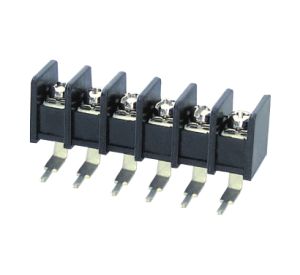- Home
- About
- Products
- Product Testing
- Application
- Services
- Information
- Contact
Views: 1226 Author: Site Editor Publish Time: 2021-04-04 Origin: Site

The use of power cable terminal in electronic equipment has become a trend, and the terminal devices themselves are gradually increasing and can carry greater power. As the volume of terminal becomes larger, they become more and more important in terms of equipment functions, and they also play an increasingly important role in ensuring product features.
Next we will introduce two tips for choosing terminal.
Although the name "electrical cable terminal" does not sound good, many companies think that its appearance plays an important role in user affinity. The terminal must be easy to install on-site, as they are often mounted in the front of easily visible product panels. In this way, marketers often emphasize the appearance of power terminal products. However, the situation that engineers design products that meet all mechanical and electrical parameters, but do not meet marketers’ requirements is often encountered, so they have to change the design. If this happens at the end of the design, a fierce argument is unavoidable and it could lead to higher costs and delays in delivery. In many industrial control systems, terminal blocks are often one of the few components that technicians need to pay special attention to. Although its user interface is relatively simple (mostly screws), it is very important for the normal operation of the device.
In general, as the current increases, the electrical wires become thicker, and the torque required to fasten these thick wires to the terminals also increases. Therefore, the power terminals require larger screws and a more rugged, insulated housing. Small screws are sometimes used to save space. This often happens in very compact terminal blocks. Some wires are more than 1/4 inch in diameter, so these small screws are difficult to deal with. When technicians and maintenance personnel need to install multiple wires, using larger screws to simplify the wiring work can greatly save time. This is why it is so important for engineers to listen to the marketing department as early as possible in the design process. If the terminals must be properly polished or color-coded, it is much easier to propose these parameters as original product requirements than to adjust them at the end of the development cycle.
When terminal blocks are used in consumer products such as high-end stereo products, its appearance becomes more important. In fact, some designers often specify gold-plated terminals for audio equipment. Although it adds cost and does not significantly improve performance, gold plating does improve the appearance of the product.
One of the first factors to consider is the power processing capability. Simply reading the data sheet does not guarantee accurate comparison data. Engineers must understand how the product performance data listed in the manual is determined by testing. At present, UL, IEC, CSA, and DIN have no uniform standards in determining the power and performance specifications of terminal products. Users need to understand the differences between UL and IEC specifications. The specifications of the terminal products manufactured in Europe adopt the IEC standard, while the products manufactured in the United States adopt the UL standard. The difference between these two standards is very large. Engineers who do not know how to measure product specifications will take considerable risks, because the selected device may not reach the required power level, or the selected device's specifications far exceed the design requirements. In Europe, the current rating of a device is determined by monitoring the temperature of the metal conductor as the current increases. When the temperature of the metal pin is 45℃ higher than the ambient temperature, the surveyor will use the current at this time as the rated current value (or maximum current value) of the device. The other item of the IEC specification is the allowable current value. It is 80% of the maximum current. Unlike this, the UL standard will make 90% of the current value of the metal conductor at 30℃ higher than the ambient temperature as the nominal current of the device. It can be seen that the temperature of the metal conductor part is a very important factor in all applications. This is even more important for industrial equipment. Industrial equipment usually need to work in an environment with a temperature of up to 80℃. If the temperature of the terminal is 30℃or 45℃ higher than this temperature , then the temperature of the terminal will exceed 100℃. According to the nominal value type and insulation material used for the selected device, the products must work at a current lower than the rated value, so as to ensure that they can be reliably within the desired temperature range operation. Sometimes, the materials suitable for compact packaged devices may not meet the heat dissipation requirements well, so the current used by this type of terminal device must be significantly lower than the rated value.
With the globalization of enterprises, companies should design systems that can be sold globally, so system designers are increasingly using power terminal products made in other countries. Because nominal measurement methods are used in Europe, it is common practice in Europe for devices to be used below the nominal value in the design. However, many American designers are not familiar with this concept. Without understanding the differences between the standards, it will be difficult in the design process.
The use of power cable terminal in electronic equipment has become a trend, and the terminal devices themselves are gradually increasing and can carry greater power. As the volume of terminal becomes larger, they become more and more important in terms of equipment functions, and they also play an increasingly important role in ensuring product features.
Next we will introduce two tips for choosing terminal.